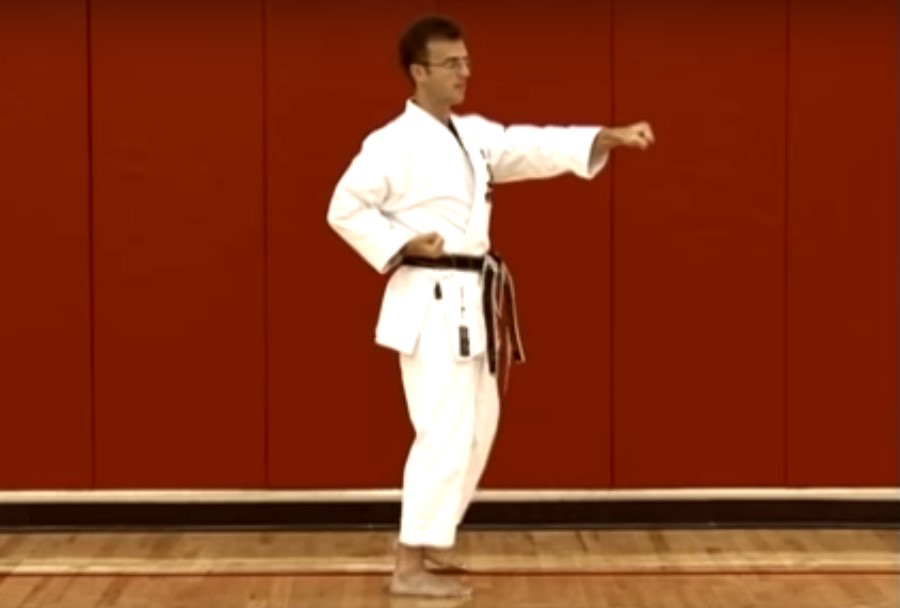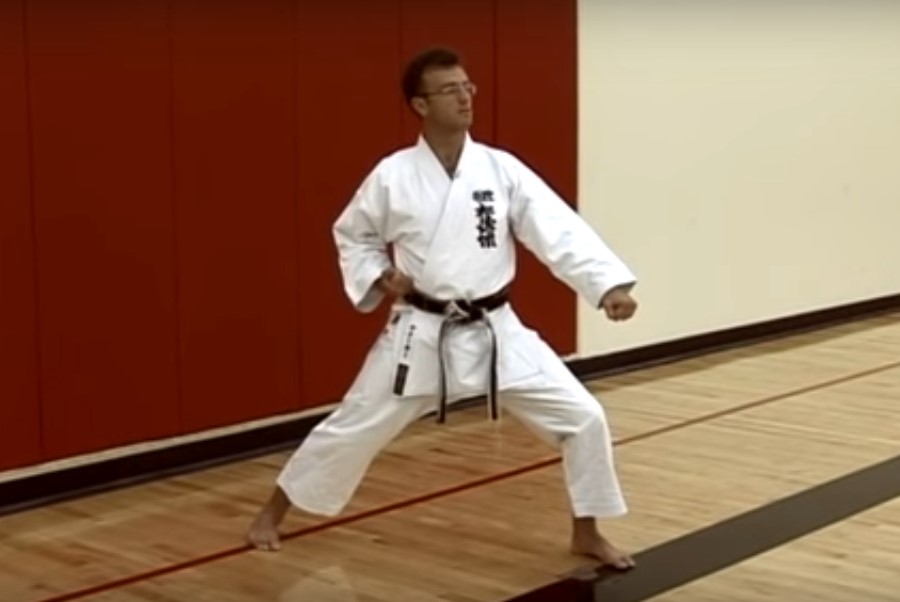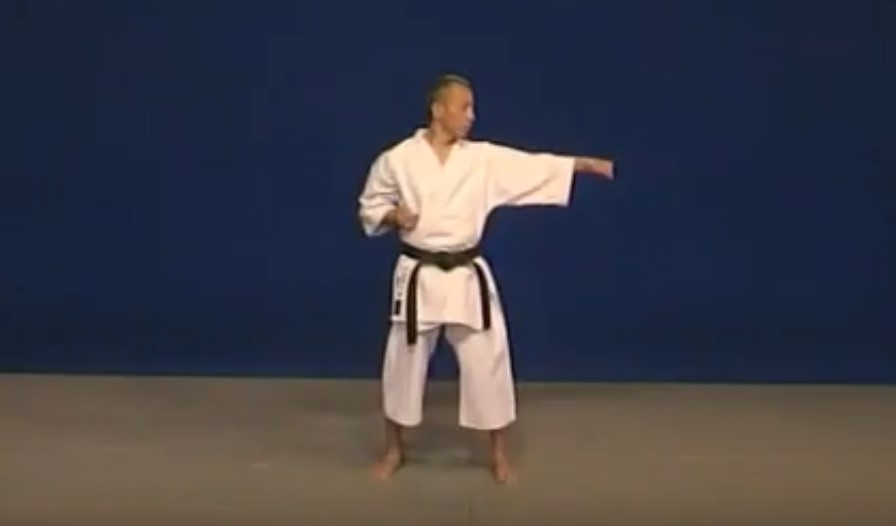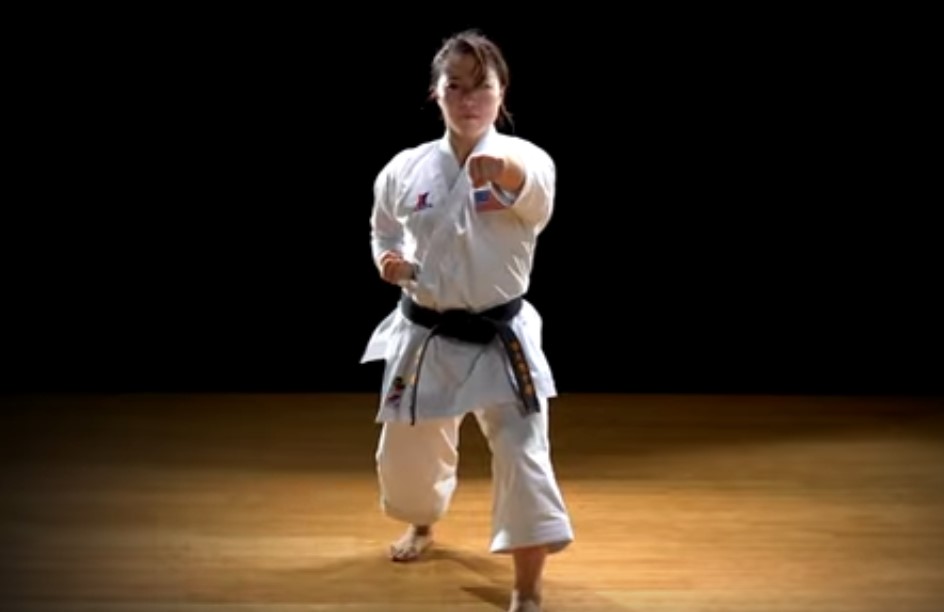We practice “chambering” a lot in karate including in kihon, kata, and basic kumite drills. But when we practice jyu kumite or freestyle sparring, “chambering” seems to go out the window and we rarely ever see it in competitions, combat sports, or street fights.
So, what is the purpose of chambering in karate? Did karate masters get it all wrong? Should we stop this “impractical” practice?
Let’s explore this in this article.
What is “chambering” in karate?
“Chambering” in karate refers to the practice of putting a hand above a hip or raising a leg up in preparation for launching a technique.
“Chambering” is a term borrowed from firearms where it refers to the act of inserting a round into the chamber of a weapon in anticipation of firing the weapon.
For example, the image below shows the chamber of a revolver which is its cylinder. “Chambering” this revolver simply means inserting a round into the chamber, ready for it to be fired.

Chambering is a common practice in every karate dojo, whether it’s a Japanese karate dojo or a traditional Okinawan karate dojo.
We almost always practice basic techniques from the chamber position from basic punching (oi tsuki, ura tsuki, gyaku tsuki, furi tsuki), blocking (age uke, yoko uke, hiki uke, gedan barai) to kicking techniques (mae geri, mawashi geri, yoko geri).
We use chamber positions a lot when practing moving basics (kihon ido) as well as basic kumite drills (e.g. gohon kumite, sanbon kumite, sandan gi, or kihon ippon kumite).
Chambering also frequently appears in kata of all styles.
Below are a few examples of the chambering practice in karate.






In the videos below, you will see that even blackbelts practice basic techniques from the chamber position.
Why do we use chambering in karate practice?
Although chambering is an integral part of our karate training, we very rarely ever see people use chambered hands or legs in competitions or real fights.
So why do we practice something that we don’t actually use?

I have asked this question a few times and had not gotten a satisfying answer. Below is my theory on why we practice chambering in karate.
Let’s assume that you know nothing about karate or martial arts and you walk into a dojo for the very first time.
Let’s imagine that you are shown a simple straight middle punch technique from a free fighting stance like the stance Rafael Aghayev and Zsolt Habda assumed in the above image.
It would be very difficult for a beginner like you to generate any decent amount of power from such a short distance. You will also most likely use just your arms to punch and there won’t be a lot of power there.
But if you are shown how to punch from a chamber position in a natural stance, you will be able to produce a lot more power in your technique because of the greater range of motion involved and the extra distance that allows you to gather speed.
Once you’ve learned the trajectory of the technique (e.g. elbow tucked in, fist turning, linear motion, etc.), you will be taught hip rotations and hip vibrations to involve as much body mass in your technique as possible.
And with correct teaching and thousands and thousands of hours of training, you will understand body mechanics and know how to use your body efficiently to deliver powerful and explosive punches.
When you reach that stage, it probably won’t be difficult for you to punch from a much shorter distance (e.g. one-inch distance) from a free fighting stance and still be able to produce impressive power.
You learn a structure to liberate yourself from the structure at some point and so what you want to end up gravitating towards is just the principles.
Rick Hotton Sensei, 5th Dan, West Wind Karate Dojo
Learning basic techniques from the chamber position is like learning to walk before learning to run. You must learn to walk first before you can run.
If you are not able to deliver good techniques from a natural stance in a stationary position with hands or legs in the chamber positions, it is guaranteed that you won’t be able to produce powerful techniques in your kata or in an actual fight.
I guess old karate masters really understood the importance of understanding body mechanics (which is the hardest part of karate training) and mastering basic principles of power generation.
And that’s why they reduced karate techniques into their simplest forms with natural stances and hands in chambers and students were required to practice them over and over again, focusing on only a single hand or leg movement until their body actually gets it.
And that was why kihon was taught that way and kata (a bridge between kihon and kumite) was created that way with frequent use of chambering position.
Traditional karate emphasizes the ikken hissatsu principle meaning “one fist, certain kill” or “to defeat an opponent with one blow”. You shouldn’t initiate a fight but when you are forced to fight, it is super important that you are able to produce really powerful and effective techniques to resolve the conflict as quickly as you can.
In order to achieve that, you need to spend a lot of time learning the principles of power generation through basic techniques broken down into the simplest forms.
Powerful techniques may not be important in sports karate but we are talking about practical karate for self-defense purposes here.
There are theories that the chamber hands are used in attacking an opponent behind you or pulling an opponent in front of you.
While these can be practical applications for the chamber hands or hikite hands, I don’t believe this is the intended original purpose of chambering in karate.
Is “chambering” the best way to practice your basic techniques?
Having said the above in defense of the chambering practice in karate, I don’t think it is the only way to practice your basic techniques.
Muay Thai doesn’t chamber kicks the way karate does and boxing teaches you to punch from your free fighting stances with hands in the kamae position but their ways of delivering techniques can be just as powerful.
Other approaches definitely can work just as well as the chambering approach as long as you put in a lot of practice and learn how to use your body efficiently to generate real power.
Other posts you might be interested in:
How to Generate Explosive Power in Your Karate Punches
This One Tip Will Massively Improve Your Karate Skills
How to Improve Your Kata Performance: 5 Surprising Tips
Shotokan’s Complete System of Kumite Practice
Choki Motobu’s Wisdom in “My Art and Skill of Karate”
References:
Chamber (firearms) – Wikipedia
IKKEN HISSATSU – SHOTOKAN KARATE COTE SAINT-LUC

